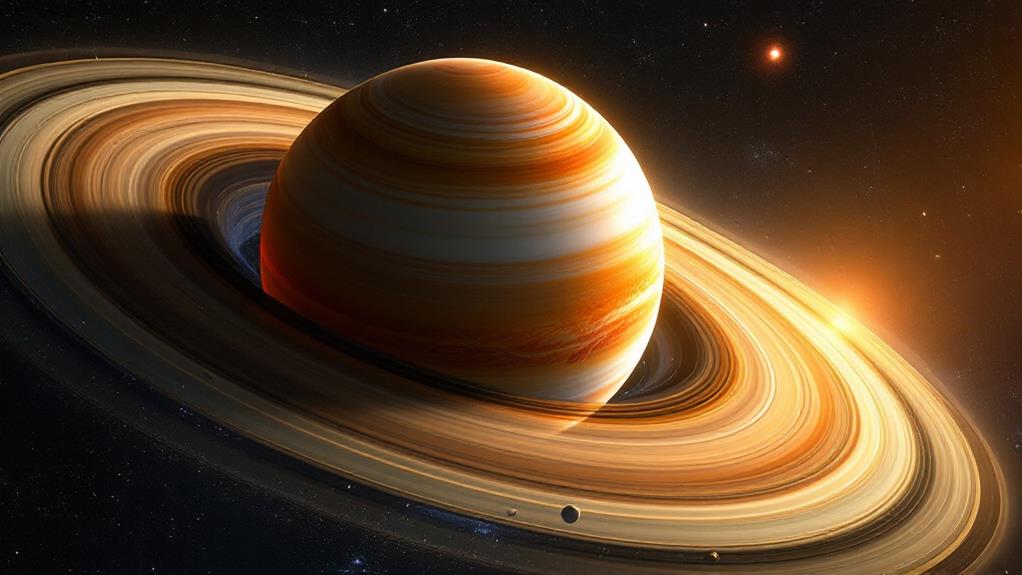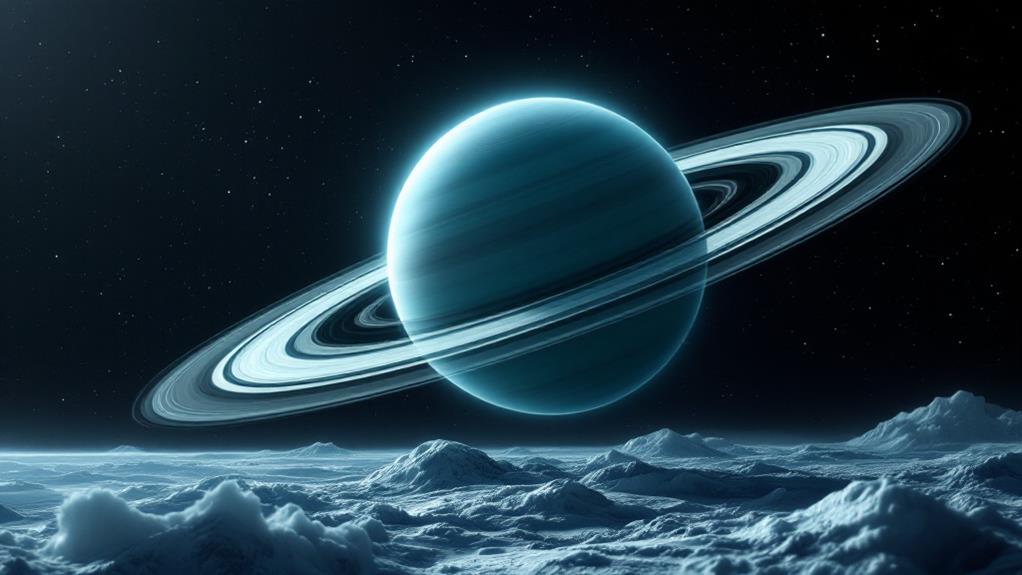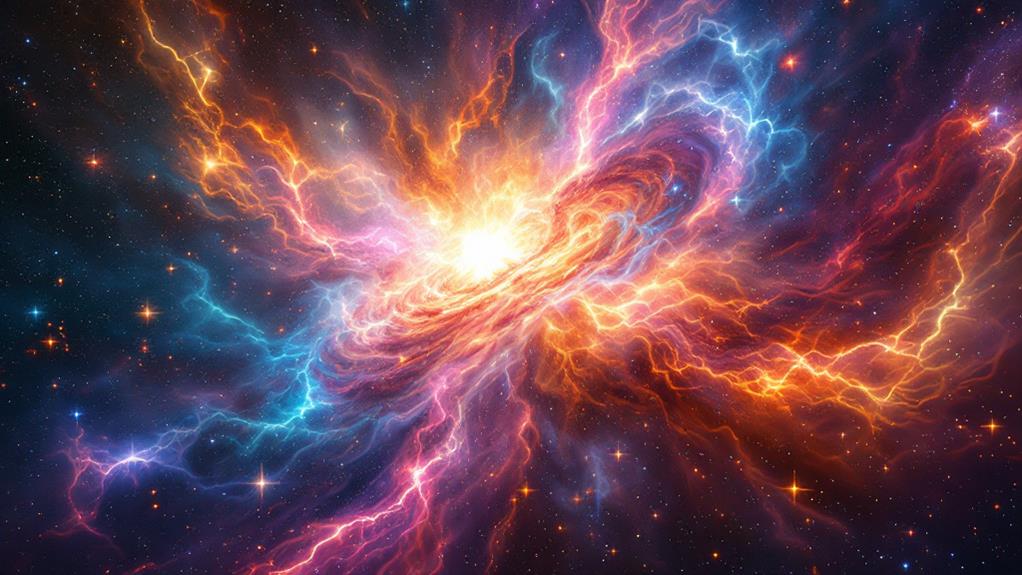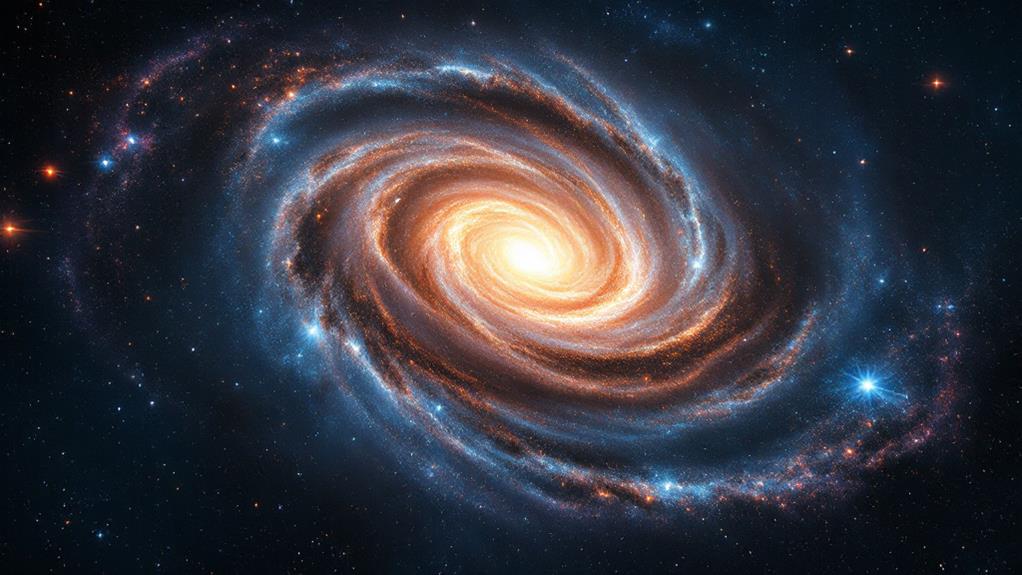Interesting Facts About Saturn: The Ringed Giant of Our Solar System
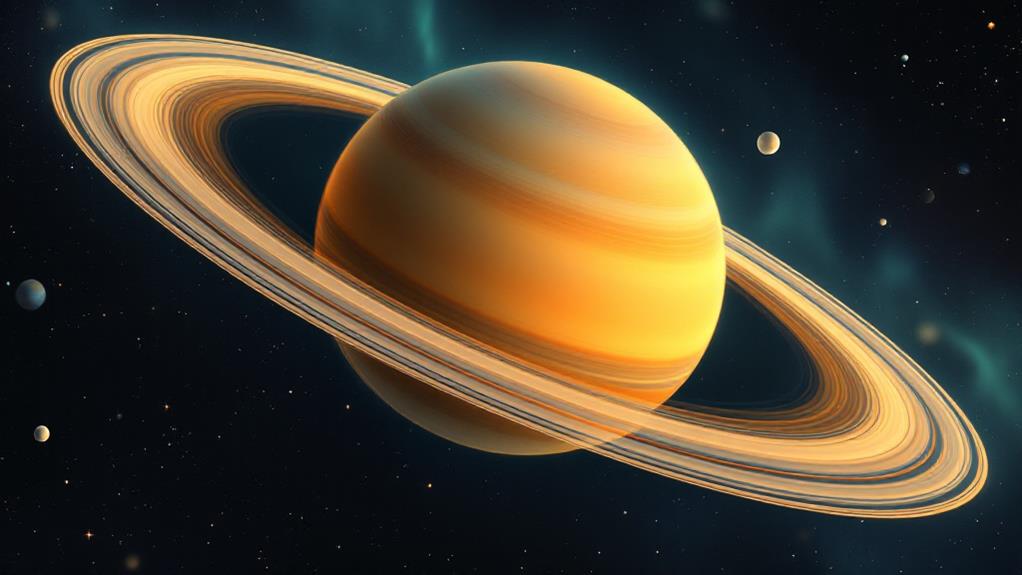
Saturn, the ringed giant, is a fascinating planet with unique features. You'll be amazed to learn that it's so light it could float in a bathtub! Its iconic rings are composed of countless ice particles, ranging from dust to boulders. Saturn's atmosphere holds mysteries like the hexagonal storm at its north pole and the Great White Spot, a massive storm occurring every 30 years. With over 80 moons, including Titan with its methane lakes and Enceladus with its water geysers, Saturn's system is an abundance of wonders. The secrets of this gas giant continue to enthrall scientists and space enthusiasts alike.
Saturn's Iconic Ring System
Saturn's ring system is one of the most spectacular sights in our solar system. You'll be amazed to learn that these rings aren't solid but composed of countless particles ranging from tiny dust grains to boulder-sized chunks. The ring structure consists of seven main rings, labeled A through G, with the outermost E ring extending over 180,000 miles from the planet's surface.
The ring composition is primarily ice, with some rocky material mixed in. You'll find that the particles orbit Saturn at different speeds, creating a fluctuating and ever-changing system. The rings are incredibly thin, with an average thickness of only about 30 feet, despite their vast width.
You might wonder how these rings formed. Scientists believe they're the remnants of shattered moons, comets, or asteroids that were torn apart by Saturn's gravity. Curiously, the rings aren't permanent; they're slowly disappearing as material rains down onto Saturn's atmosphere. In about 100 million years, you'd no longer see Saturn's iconic rings if you could visit the planet. This makes our current view of Saturn a unique snapshot in its long history.
Density and Composition
While Saturn's rings are iconic, the planet itself holds fascinating secrets. You might be surprised to learn that Saturn is the least dense planet in our solar system. In fact, it's so light that if you could find a bathtub large enough, Saturn would float! This low density is due to its composition, which is primarily hydrogen and helium, similar to Jupiter.
Saturn's interior is believed to have a small rocky core surrounded by layers of metallic hydrogen, liquid hydrogen, and a gaseous outer layer. The planet's gravitational field is unique, as it's not perfectly symmetrical due to its rapid rotation and internal structure. This asymmetry provides helpful clues into Saturn's internal makeup.
Despite its distance from the Sun, Saturn generates a significant amount of internal heat. This heat generation is thought to be a result of the Kelvin-Helmholtz mechanism, where the planet slowly contracts and converts gravitational potential energy into thermal energy. This process helps maintain Saturn's warm interior and drives its lively atmosphere, creating the stunning bands and storms we observe from Earth.
Atmospheric Mysteries
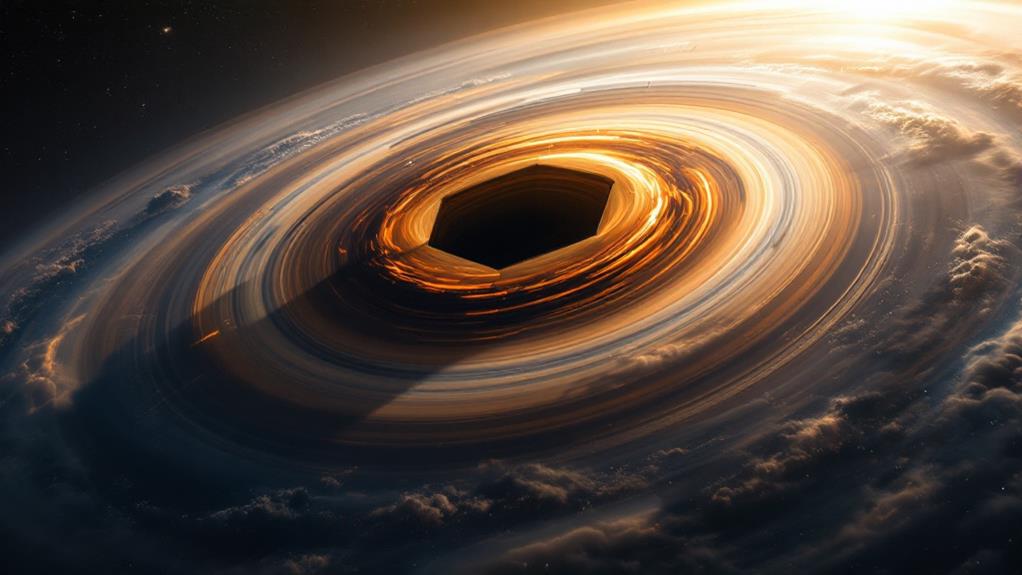
One of the most intriguing aspects of Saturn is its mysterious atmosphere. You'll find that Saturn's cloud composition is primarily hydrogen and helium, but it's the unexpected atmospheric phenomena that truly captivate scientists. As you immerse yourself in Saturn's atmosphere, you'll uncover a complex system of swirling storms and jet streams that behave differently from those on Earth.
Perhaps the most famous of these atmospheric mysteries is the hexagonal storm at Saturn's north pole. This six-sided jet stream, spanning about 25,000 kilometers across, has perplexed researchers since its discovery. You'll also encounter Saturn's Great White Spot, a massive storm that occurs roughly every 30 years, engulfing much of the planet's northern hemisphere.
The planet's upper atmosphere experiences an unexplained temperature increase, reaching temperatures similar to Earth's despite being much farther from the Sun. Scientists are still working to understand the mechanisms behind this heating phenomenon. As you investigate Saturn's atmosphere, you'll find that its mysteries continue to challenge our understanding of planetary science, making it a fascinating subject for ongoing research and investigation.
Moons and Their Peculiarities
A celestial dance surrounds Saturn, with its impressive collection of over 80 known moons. These satellites range from tiny moonlets to Titan, the second-largest moon in our solar system. Each of Saturn's moons has its own unique characteristics, making them fascinating subjects for planetary scientists.
- Enceladus: An icy world with geysers spraying water into space
- Titan: Boasts a thick atmosphere and lakes of liquid methane
- Mimas: Resembles the Death Star with its large Herschel crater
You'll find that many of Saturn's moons have surprising features. For instance, some moons show evidence of buried craters, suggesting active geological processes reshaping their surfaces. Volatile organics have been detected on several moons, hinting at the possibility of prebiotic chemistry. These moons also interact with Saturn's rings, creating gaps and waves in the ring system.
As you investigate Saturn's lunar family, you'll uncover a diverse array of worlds. From the sponge-like appearance of Hyperion to the two-toned coloration of Iapetus, each moon offers a unique glimpse into the intricacies of our solar system's formation and evolution.
Saturn's Hexagonal Storm
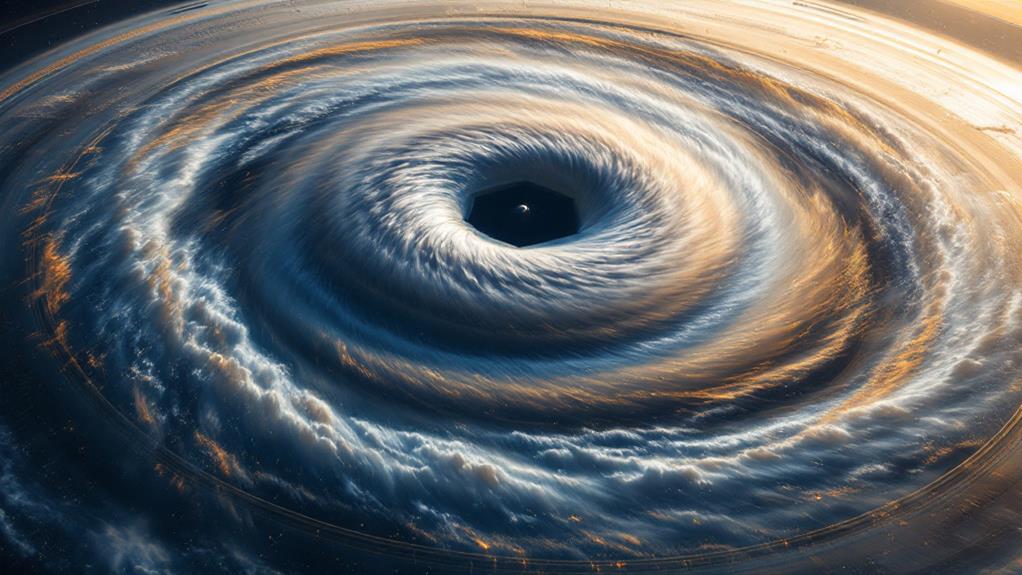
Saturn's most peculiar atmospheric feature is its hexagonal storm at the north pole. This massive six-sided jet stream spans about 25,000 kilometers across, dwarfing Earth in size. You'd be amazed to know that this storm has been raging for at least four decades, maintaining its distinctive shape despite the planet's turbulent atmosphere.
Scientists believe the hexagon's formation is due to complex interactions between Saturn's internal jet streams and cloud formation dynamics. Unlike Earth's circular hurricanes, Saturn's unique atmospheric conditions allow for this polygonal shape to persist. The storm rotates at nearly the same rate as the planet, completing one revolution every 10 hours and 39 minutes.
What's even more intriguing is that the hexagon changes color with Saturn's seasons. During the planet's long winter, it appears blue, but as summer approaches, it shifts to a golden hue. This color change is likely due to increased sunlight altering the atmosphere's chemical composition. Despite numerous observations from Earth-based telescopes and space probes like Cassini, the hexagon's exact origins and mechanisms remain an engrossing mystery for planetary scientists to investigate.
Exploration and Future Missions
While Saturn's hexagon remains an engaging mystery, our investigation of the ringed planet continues to evolve. You might be surprised to learn that Saturn has been visited by four spacecraft so far: Pioneer 11, Voyager 1, Voyager 2, and Cassini-Huygens. These missions have provided priceless data about Saturn's composition, rings, and satellite diversity.
Future missions to Saturn are in the planning stages, with scientists eager to uncover more of its secrets. Some proposed missions include:
- A dedicated orbiter to study Saturn's atmosphere and rings in greater detail
- A probe to explore Titan's methane lakes and potential for life
- A lander to investigate Enceladus' subsurface ocean and geysers
Researchers are particularly interested in identifying potential probe landing sites on Saturn's moons. Titan and Enceladus are prime candidates due to their unique environments and potential for harboring life. As technology advances, we're getting closer to sending more sophisticated instruments to investigate Saturn's system. These future missions will help us better understand the planet's formation, evolution, and its role in the solar system's history.
